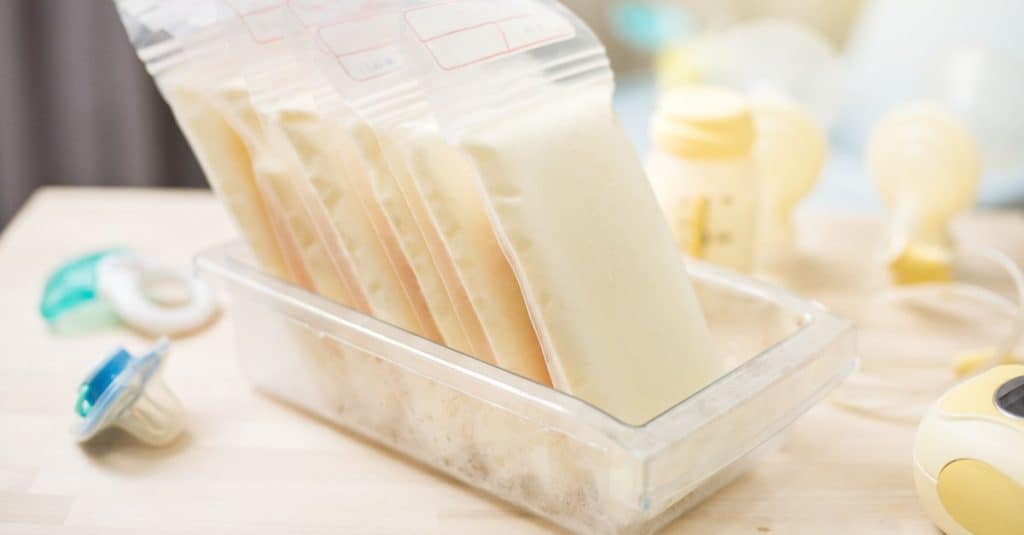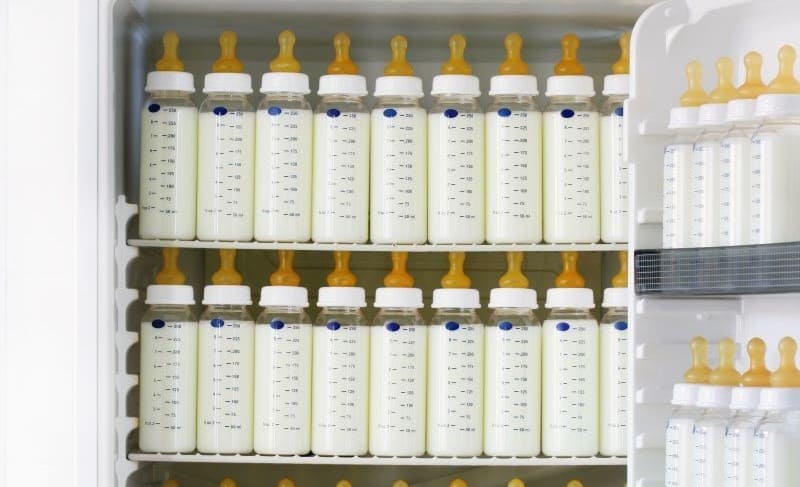Nursing mothers, especially first-timers, might have endless queries about breastfeeding. Questions about how long they should breastfeed, how to store breast milk, and how to heat it are most common. Another posing question is whether one can add warm breast milk to cold?
You shouldn’t combine warm breast milk with cold or frozen milk because the temperature change will create a favorable condition for bacteria to grow. Doing so exposes babies with immature immune systems to various health risks.
You can add warm (freshly expressed or room temperature) breast milk to cold milk only if you thoroughly cool the former in the refrigerator before adding it. Albeit initially confusing, you must adhere to several breast milk preparation, storage, and feeding guidelines.
Why You Can’t Add Warm Breast Milk to Cold Breast Milk?
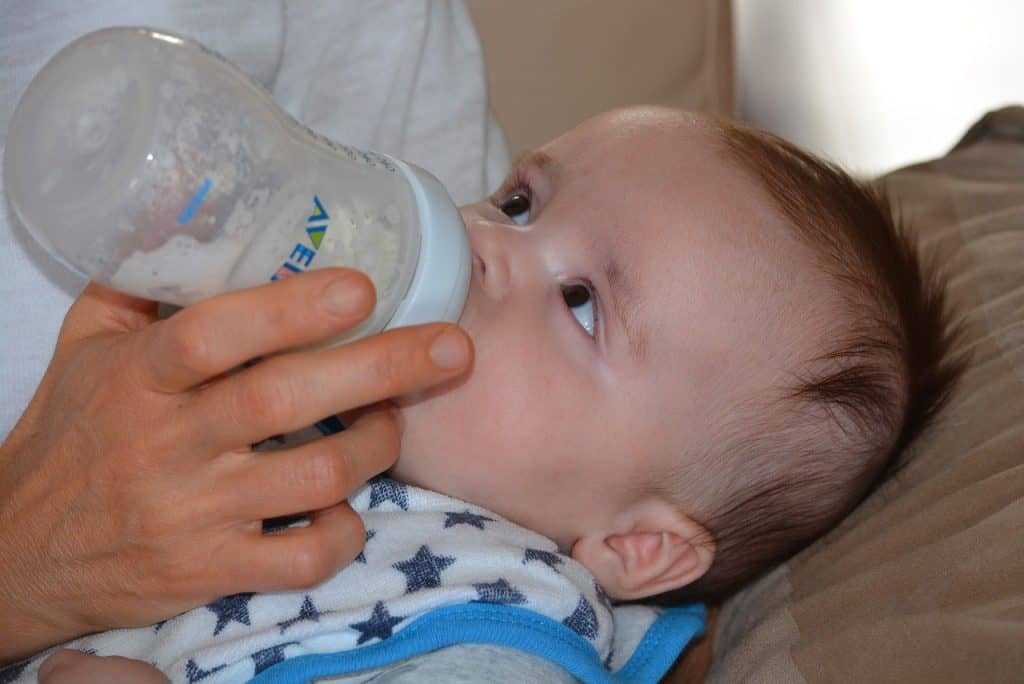
Certain conditions promote bacterial growth. For instance, most bacteria thrive in moist environments because they need water to grow, just like every life form. Oxygen concentration and environmental pH also play a critical role in the propagation of bacteria.
The multiplication of bacteria also heavily relies on temperature. Most disease-carrying bacteria thrive in warm temperatures, demonstrating why storing, preparing, and thoroughly cooking your food is crucial. Otherwise, harmful bacteria might grow in your food.
Such meticulous preparation extends to breast milk. The Centers for Disease and Control Prevention (CDC) recommends refrigerating breast milk at 40°F.
Refrigerating preserves breast milk’s nutritional value and deters bacterial growth. If you refrigerate freshly expressed breast milk, it can last up to four days. However, if you thawed or froze it previously, you must use it within 24 hours.
It’s worth noting that the danger zone or the range of temperature where bacteria multiply rapidly is between 40°F and 140°F (approximately between 4°C and 60°C). Freshly pumped breast milk has more or less the same temperature as the human body (around 97°F and 99°F).
When you add warm breast milk to refrigerated breast milk, the temperature will rise above 40°F, creating a favorable environment for various harmful microorganisms to grow. Therefore, it’s ill-advised to add warm breast milk to refrigerated or frozen breast milk.
It’s significant to note that children, especially infants, have immature immune systems, making them susceptible to various illnesses from bacteria and viruses. Hence, you must follow the guidelines for the proper storage and preparation of breast milk.
To mix warm and cold breast milk, you must bring them to the same temperature first and foremost. You can do this by warming up the cold breast milk or cooling the warm breast milk. Another option is to feed them separately to your baby to avoid problems.
How to Warm Refrigerated Breast Milk
- Procure breast milk from the refrigerator and place it on your countertop.
- Heat water without reaching the boiling point using a microwave, a kettle, or a pot with a lid. Once the water is warm enough, pour the water into a bowl.
- Place the breast milk in the bowl of water. If your breast milk is in a bag container, remember to seal it properly.
- Leave the breast milk in the bowl of warm water for one to two minutes. Take it out once the liquid reaches your desired temperature.
- Pour the warmed breast milk into a bottle if it’s in a sealed bag. Attach the bottle nipple if it’s already in a bottle. Make sure you do this with clean hands.
- Gently swirl the liquid in the bottle to mix the separated fat. Remember not to shake the bottle.
Before feeding your infant the now-warm milk, test the liquid’s temperature by pouring a few drops on your wrist. Make sure that it’s warm and not hot.
How to Warm Frozen Breast Milk
- Take the frozen breast milk out of the freezer.
- Thaw the frozen breast milk by placing it in the refrigerator overnight. Remember to thaw the oldest breast milk first because the quality of breast milk decreases over time.
- Once thawed, remove the breast milk from the refrigerator.
- Warm the thawed breast milk by following the instructions above regarding warming refrigerated breast milk. Don’t put a bag or bottle of breast milk in the microwave because doing so will create hot spots that’ll damage the milk and scald your baby.
Use the thawed breast milk within 24 hours after defrosting. Once you bring it to room temperature, remember to feed it to your child within two hours.
According to the CDC, you can no longer refreeze thawed breast milk. There’s little information about the effects of refreezing breast milk brought to room temperature. However, many believe breast milk might lose its nutritional components and original taste.
Frequently Asked Questions
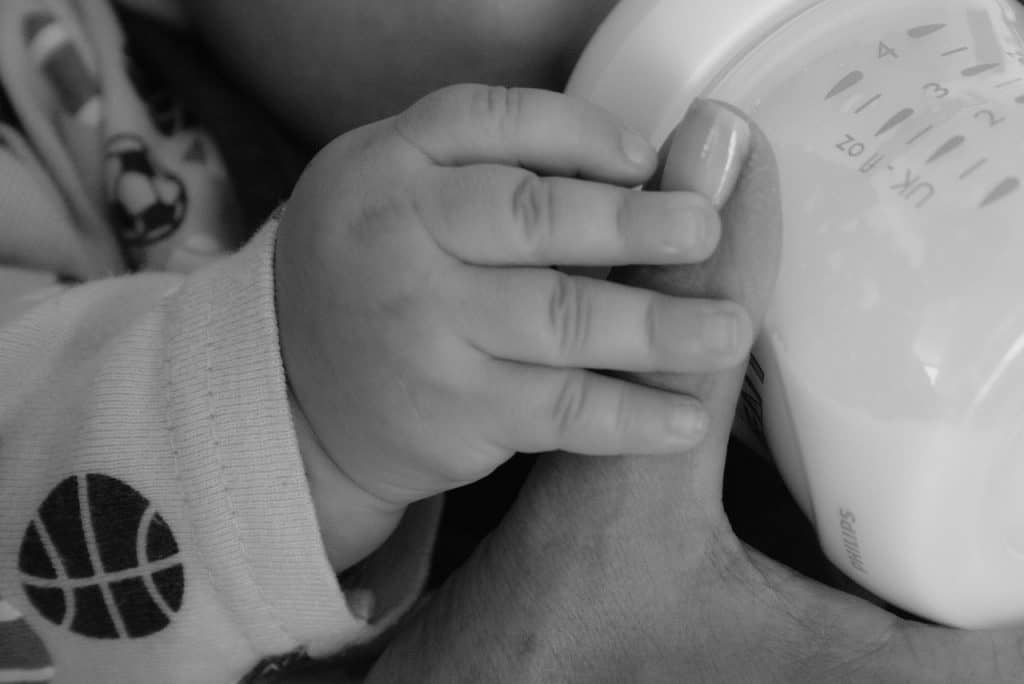
Can I Combine Freshly Pumped Breast Milk with Room Temperature One?
Although not mixing breast milk with different temperatures is a standard recommendation from many parents, some are second-guessing now. The American Academy of Pediatrics (AAP) recently updated its FAQs page regarding breast milk storage guidelines, allowing milk pooling.
However, you must be mindful that you can do this on one condition. You can only mix breast milk with the freshly expressed one at room temperature if you’ve left the former for about four hours. If you’ve left it sitting beyond that period, feeding it to your baby is unsafe.
Can I Mix Freshly Expressed Breast Milk with Defrosted One?
You can combine freshly expressed breast milk with a defrosted one in one bottle only if they have the same temperature. However, there are a few things you must consider before doing this.
Firstly, freshness is always crucial when it comes to breast milk. Researchers say breast milk’s vitamin C and antioxidant properties decrease the longer you store it in the refrigerator or freezer. However, it’s still better than formula milk.
Secondly, it’s not advisable to refreeze breast milk you thawed. Therefore, if you combine freshly pumped breast milk with defrosted breast milk, you can’t store it again.
Can I Use the Microwave to Warm Breast Milk?

The CDC advises against thawing or heating breast milk using the microwave. Hot spots will likely develop when you microwave the milk because the appliance won’t heat the milk evenly. You risk burning your infant’s mouth by doing this.
Moreover, microwaving destroys the nutrients and antibodies found in breast milk. If you want to warm refrigerated breast milk, leave the bag or bottle of breast milk in a bowl of warm water. Meanwhile, if you’re going to warm frozen breast milk, thaw it in the refrigerator overnight first.
Is Using a Bottle Warmer Safe?
Some parents use a bottle warmer to warm breast milk because they believe this tool evenly heats the milk compared to a microwave, which creates hot spots. Bottle warmers are practical tools to warm milk faster than a classic water bath.
Another helpful feature of a bottle warmer is that it keeps the milk from boiling. If you heat breast milk over a specific temperature, it could lose its nutritional properties. Therefore, this bottle warmer feature is essential.
However, even if you use bottle warmers, there’s still a chance of overheating breast milk. According to a 2015 study, bottle warmers can get breast milk above 80°F (26.7°C), negatively affecting breast milk’s nutritional value.
Can I Reheat Previously Warmed Breast Milk?
Your baby needs the nutrients from breast milk to naturally protect them from illness. Heating breast milk to above 40°C might destroy its immunologically active factors. Therefore, reheating previously warmed breast milk increases the chances of this happening.
How Long Can Breast Milk Sit Out?
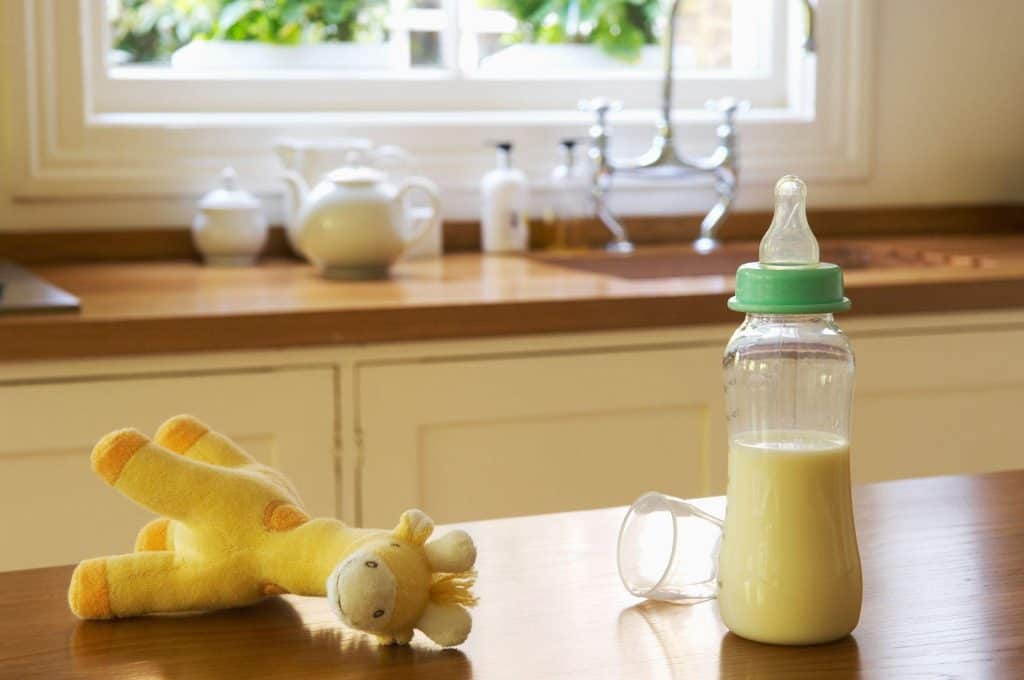
According to the CDC, freshly expressed or pumped breast milk can last up to four hours if you let it sit on the countertop. The room temperature must be 77°F (25°C) or colder. Meanwhile, refrigerated breast milk can last up to four days.
Breast milk stored in a freezer at a temperature of 0°F (-18°C) or colder is acceptable for up to 12 months. However, consuming it within six months is best. On the other hand, thawed (or previously frozen) breast milk can only last about one to two hours if sitting at room temperature.
If you refrigerate thawed breast milk, it can last for 24 hours. Remember that if you go beyond that period, it’s best to dispose of the breast milk. In addition, don’t attempt to refreeze previously thawed human milk.
Lastly, you must use leftover breast milk from a feeding session within two hours. Beyond that time frame, you’d be risking feeding your child spoiled milk.
Can I Combine Breast Milk from Different Days?
The short answer to this question is yes, but combining breast milk pumped on the same day is best. If the circumstances don’t provide that option, you can mix breast milk from different days. However, ensure to label the breast milk by the date of the oldest one expressed and don’t mix warm breast milk with cold.
Keeping track of pumped breast milk by labeling them is essential. You can use erase markers and sticky notes to do this. Remember to adhere to the CDC‘s proper breast milk storage recommendations.
Final Thoughts
Although it’s far less tedious to mix warm and cold breast milk than bringing them to the same temperature, the consequences might endanger your child’s health. Their safety comes first, so it’s best to adhere to proper preparation and storage guidelines.
You might’ve seen different recommendations from fellow parents or medical experts across various platforms regarding preparing and storing breast milk. Numerous factors are at play, so it’s best to do your research, allowing you to do what’s best for your circumstance.
